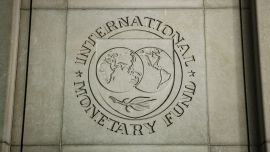Inflation in March reached 4.7 percent, the INDEC national statistics bureau revealed Tuesday, casting a f ur ther cloud over the government’s attempts to tackle rampant price increases and complicating President Mauricio Macri’s hopes of re-election.
Unlike some previous spikes, however, this new peak was less due to regulated prices than basic food items. In an attempt to limit economic pain among voters in the build-up to October’s presidential ballot, the government which announced a freeze in the price of basic goods and public services until October just 24 hours later.
This week’s data means prices on INDEC’s consumer price index have risen by 11.8 percent in the first quarter of 2019 alone, underlining the difficulties the Mauricio Macri administration faces in moving to tamp down inflation.
INDEC latest update means that prices have risen 54.7 percent over the last 12 months.
Speaking Monday, President Macri acknowledged that the data for March was likely to be high, while arguing that it had hit a “peak” and would likely go fall lower afterwards.
“We hope that after this peak [of inflation] that we will have in March, from here [and] over the years, we will advance step-by-step to eradicate it and become one more country of the vast majority, which have single-digit inflation,” the president said at an event in the Buenos Aires City neighbourhood of Parque Patricios.
The president added that Argentines “have started by doing what is appropriate, not living on credit and loans, not spending more than we have.”
LEADING CULPRITS
The first month of the school year typically has high education costs but this year they broke all bounds at 17.9 percent.
Other leading culprits were food and non-alcoholic beverages at six percent and clothing and footwear at 6.6 percent, while the regulated prices of transport (4.2 percent) and utilities (2.8 percent) were below average. Communications costs rose 4.4 percent.
Rises in food and drink are especially painful for those with the lowest resources, hitting the poorest families the most.
The Central Bank responded by tightening monetary policy to the applause of the International Monetary Fund, raising interest rates to 67 percent and squeezing liquidity by taking 51.8 billion pesos out of circulation via an increased LELIQ bond issue, in the process taking LELIQ debt stock over the trillion-peso mark (1.08 trillion or some US$ 26 billion). The Central Bank also set a new cap and floor for exchange rate intervention at 51.45 and 39.75 pesos per dollar
In terms of a regional breakdown, inflation in Greater Buenos Aires reached 4.8 percent, with the highest increases overall registered in the northeast of the country, where prices jumped 5.1 percent.
Core inflation, which is used by the Central Bank to adjust its rates, stood unchanged at 4.6 percent in March.
Argentina currently has one of the highest rates of inflation in the world. In 2018, inflation reached 47.6 percent, as citizens witnessed a sharp fall in purchasing power.
Economic problems were exacerbated by a currency crisis that saw the peso lose half its value against the dollar in 2018. Since the start of 2019, it has already lost another nine percent.

























Comments